
The scene outside Buckingham Palace just minutes after the announcement of Queen Elizabeth II's death was made. A double rainbow appears above the monument of our 2nd longest serving monarch - Queen Victoria

A rainbow could be seen over the sky at Windsor Castle as the British flag was lowered after the announcement of Queen Elizabeth II's death.

Thousands of the Queen's mourners were greeted with another “poignant” rainbow on Sunday evening as her Lying in State came to a close. The spectacle appeared for three minutes over Westminster Hall at 6:54pm, after rainbows appeared above Buckingham Palace and Windsor Castle on Thursday 8 September, as the monarch’s death was announced. Waiting crowds who were told the queue to say goodbye to the Queen had closed on Sunday were greeted by a rainbow over Westminster Abbey, where hours later the Queen will be laid to her final rest.

A rainbow over Buckingham Palace.

A couple walks on a small path towards a rainbow in the sky over Frankfurt, Germany that appeared after a heavy rain shower on Saturday May 2nd 2020. Playgrounds, museums, and churches in the country are set to open May 4 with a decision on the reopening of schools scheduled on May 6.
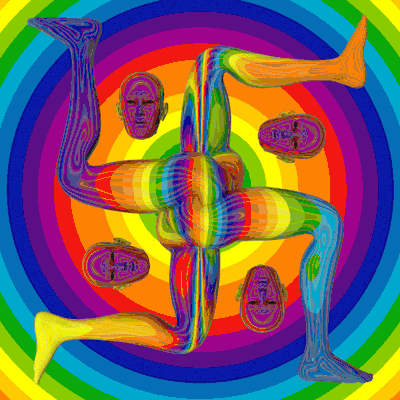

Once upon a time, a long long time ago, my favourite storybook was called “How the rainbow lost her colours”. My mother remembers the book with considerably less fondness because she had to read it two or three times a day for years and years. I can’t remember how the story went, only that I loved it. Each night my daughter insists on my reading a story from my head. So, I chose to base it on my old rainbow book and largely make it up as I go along. It takes us a full week to get to all the colours and Miss Diva has very definite ideas on where the colours should be found and why. I thought it was perhaps time I wrote it down. Only that turned out harder than I thought. Saying it out loud is much easier. Writing it down makes me edit and think and ponder and worry. As a result I didn’t log into my blog once over the weekend.

Stonehenge was lit up by a rainbow in a hint of brighter times ahead. Credit: Nick Bull/pictureexclusive.com
Now it is Monday and I have nothing to lose, so here is the start of the story and hopefully if the start of the school term doesn’t drive me to an early grave I will add a chapter every day until the blessed thing is done. If I can bribe the designer sitting across from me, he may concede to illustrate it for me.
The Rainbow
Not so far away, in a world just a hop, skip and a jump away lies the Land of the Rainbow. The beautiful rainbow stretched from one side of the world to the other and under her gaze the land flourished. Sadly as time passed people forgot to look up into the sky. They took for granted the rainbow would always shine down upon them. Without their faith the rainbow’s colours began to fade until one day they were no more. Without the colours of the rainbow all hope, love and happiness began to fade from the kingdom.
The king of the land called his bravest knights and sent them forth to seek the rainbow’s colours, but they returned heavy of heart and empty-handed. The king called all the artists and painters of the land and bade them paint all night and all day until the rainbow’s colours were restored. As fast as they painted, the colours ran off like water. The king called all the magic makers together and ordered them to restore the rainbow. But all their spells did nothing.
The king called the wise men, the teachers and the learned and locked them in his library to find an answer, but they found none. The king managed to call on nearly everyone in the kingdom, but he forgot the most important people of all. He forgot that rainbows live in the hearts of children and only they could save the rainbow. Isabelle and Alastair lived on the edge of a small village. Hand in hand they looked up at the rainbow and promised to do whatever they could to bring her back to life.
It never occurred to them that they couldn’t. And that is why they could.

As I looked outside the car window, I saw a rainbow appear in the sky. It had just rained. This reminded me of the story of the great flood during Noah’s time that destroyed the earth, and that God used a rainbow to establish His covenant with man.

A 97-year-old man dubbed as the “rainbow grandpa” saved his entire village from destruction by painting each building with colorful arts.
Huang Yung-Fu
Over 10 years ago, the Taiwanese government threatened to demolish an entire village as the only person left in the village was an 86-year-old man, Huang Yung-Fu. A more modern apartment complex was planned to be built on the site. Huang was offered money to move to another place, however, he did not want to leave his town. So he took the matters unto his own hands in an attempt to protect his entire village. He started painting colorful arts on every building and structure in the village.

Huang was a former soldier from China. After losing the war, Huang and two million others fled to Taiwan to seek shelter. There, Huang lived in a makeshift village made for the military personnel and their families. What was meant only as a temporary shelter eventually became his forever home. “When I came here, the village had 1,200 households and we’d all sit and talk like one big family,” Huang shared with BBC. “But then everyone moved away or passed away and I became lonely.”

Master painter Huang Yung-Fu

Now known as the “rainbow grandpa,” he successfully protected his hometown by attracting millions of tourists. Huang started painting a small bird in his bungalow and continued to paint all over the entire village. A university student happened to pass by the area. Fascinated by the colorful arts, he snapped a photo of the village and posted it online. He then helped start a campaign to save the village from destruction. Entire Taiwan’s heart was captivated by this small village and Huang’s perseverance. “The government has promised me they will keep this house and this village,” he said. “I was so happy and thankful.”







The 1.3-tonne wooden rainbow that once marked the entrance to theme park Rainbow's End visited Tauranga yesterday on the search for a new home. Rainbow's End is developing a new front gate and has removed its 30-year-old rainbow to make way for the new entrance. Marketing manager Katharine Murray said Rainbow's End wanted to find somewhere to re-home the rainbow where it could continue providing joy for many more years. The team decided a road trip through the North Island would be the best way to find a new home.

The "Re-Home the Rainbow Road Tour" began last Monday in Manukau and has stopped at towns all over the North Island before visiting Tauranga yesterday. Ms Murray said the response to the tour had been positive. "The kids love seeing the rainbow and it's great to be able to tell everyone about our new front gate. "Everyone has really enjoyed the opportunity to take photos and we have been told of visits and memories of Rainbow's End from people on the way," Ms Murray said.
Tyler Neal, 9, just won a Family Pass to Rainbows End. Photo / George Novak
Ms Murray said that people had suggested ideas for the rainbow's new home - with many saying they would like to see it end up somewhere that still gives people joy such as children's hospitals or playgrounds.
Rainbow's End - New Zealand's Largest Theme Park 🌈
The rainbow
* 3420mm high
* 7230mm wide
* 1.3 tonnes
* Made of timber and plywood with internal metal bracing
* In very good condition.
On the Rainbow's End website, there is a competition where people can upload a photo of a New Zealand attraction and place a rainbow over it. Entries have ranged from people's backyards to sport stadiums, beaches and, of course, on other iconic landmarks - such as the Beehive and alongside Paeroa's L&P bottle.

Its main ingredient is the carbonated mineral water collected from a spring at the Coromandel town of Paeroa, bubbling up in just the right proportion of magnesium bicarbonate to blend refreshingly with a squeeze of lemon juice. The water was first marketed in 1910 and, though the local L&P factory closed in 1980, with the company now part of the global Coca-Cola franchise, it still has a big presence in the town – literally. Everyone is familiar with that iconic brown bottle with its bold yellow label. Lemon and Paeroa – L&P – has featured in the fridges of dairies for nearly a century, fizzing sweetly on our tongues throughout the country and, in its advertising, giving us the versatile slogan ‘World Famous in New Zealand’. Because although there’s a lot more to this town than the famous Big Bottle, it’s an obligatory stop for every visitor. Towering overhead at around seven metres high, it’s solidly made from concrete rings and was intended as a feature for promoting the town. It has performed this function splendidly well and must have been photographed millions of times since it was built back in 1969.

Paeroa is something of a regional hub located at the base of The Coromandel and the entrance through to the Karangahake Gorge, which is incredibly popular for its gold mining history, walkways, winery, fishing, rock climbing, swimming and Hauraki Rail Trail.
Paeroa is the self-proclaimed Antiques Capital of New Zealand and home to the therapeutic spring water which, mixed with lemon, is what we know today as the drink Lemon & Paeroa (or L&P) “World Famous in New Zealand."

Explore Paeroa, a sleepy rural town in the Thames Valley, set in the lower regions of the Coromandel Peninsula. The effervescing waters of the Paeroa Spring are believed to have therapeutic qualities. The town’s claim to fame is a drink called Lemon & Paeroa (L&P), which was made with this mineral-rich water.
Find historic and quirky treasures in one of Paeroa’s many antiques and vintage shops full of collectables and secondhand items. Delve deeper into the town’s rich history by visiting Paeroa Historical Maritime Park. As New Zealand’s only inland port at the time, Paeroa played a big part in the gold rush before the railway was built. Browse the displays in the historic building and stroll through the grounds to the river's edge.

New Zealand Parliament Building "The Beehive"


A rare fire rainbow was spotted at the Jersey Shore on Sunday, May 26th, 2019.


Londoners are describing this evening’s rainbow over the capital as a “rainbow of hope” following the devastating terror attack on Saturday night 03 May 2017. Commuters took to social media to share their stunning pictures of the spectacle that arched over London on Monday evening, using the hashtag #LoveLondon. The hashtag regularly accompanies messages being shared online as a sign of solidarity after three attackers killed seven people in the London Bridge attack. The striking rainbow dominated the city’s skyline as it arched over the river Thames and landmarks such as the Shard and the Barbican Estate, with some people describing it as a “rainbow of hope.”
New video of London Bridge terror attack depicts 18 minutes of horror
London bridge attack officer: 'I wasn't backing down'- BBC News

When Mykey O’Halloran moved to Australia’s Phillip Island in February 2021 he knew he wanted to give his bungalow a colourful makeover, but certain neighbours had other ideas. “I had five men aggressively banging the front door,” he told QNews in March. “One threatened to kill me if I paint my house rainbow and [was] calling me homophobic things. “[One] guy introduced himself as the homeowner from across the road. [He] told me his reason for being at my house was to tell me not to paint my house rainbow.”


He says the man then told him: “See what happens if you do.” O’Halloran said the encounter left him shaken, and “feeling so invaded, violated [and] threatened in my very own home”. Police charged a 23-year-old man with unlawful assault and making threats to kill, but the rest of the island community were determined to give the newcomer a better welcome. Four weeks later more than a hundred people pitched in to help O’Halloran make his rainbow dream come true, with some even travelling from as far as Melbourne to take part. Dulux Australia donated 40 litres of paint to the endeavour and over a single weekend the team of volunteers painted every inch of his bungalow in bright rainbow colours.

“I’m a gay man and I’m open and I’m proud to be, I express colourfully naturally as my job is a rainbow hair artist and I’m creative, but what happened today was people standing by my decision to have a rainbow house regardless of opposing opinions or the minority of homophobic opinions.” Now his home has become an inescapable reminder of the island’s position on homophobic hate – but just in case anyone forgets, one kind neighbour donated a new surveillance system of eight security cameras.

A police force has attracted criticism and sparked a social media storm by deciding to adorn one of its cars with rainbow colours to mark support for the LBGTQ+ community. The move was branded a waste of money, said to show a wrong-headed attitude to priorities and to be an insult to other minority groups. But Cumbria Police fiercely defended the decision, which affects just one of its 320 cars, as it would encourage members of the LGBTQ+ community to trust the force and report crimes against its members. The police have also been praised by the LBGTQ+ community, who support their decision.
An example of a Pride car, this one is from Suffolk..

UK police forces spend £66,000 on LGBT rainbow cars, shoelaces and flags | Headliners
.jpg)
Officers and staff from Merseyside Police will once again be taking part in the Pride in Liverpool march, with that year’s event going virtual on Saturday (25 July 2020).
Dozens of organisations from around Merseyside will be taking part in the event, due to last for around an hour, which this year has the theme ‘Young at Heart’ 2020. It will promote the right for LGBT+ people to enjoy a happy, healthy and carefree life regardless of age, ability or how they identify. The rainbow flag will once again be flown at Merseyside Police HQ, and Merseyside Police Chief Constable, Andy Cooke said the Force is determined to make sure the Force marks Pride despite the absence of a physical march due to ongoing restrictions.

Detective Constable Tracy O’Hara, Chair of the Merseyside Police LGBT+ Network, said: “Pride means being able to be part of an event which truly enabled me to feel I can be me, where like-minded people come together to remember those who fought for our rights and to be part of that history. To be a gay police officer marching in Pride is one of the proudest moments in my life and my career.”
Constable Sophie Dowdall added: "Pride to me means acceptance, history and representation. To be part of something that not only celebrates being who you truly are but also remembers those who have fought for us and represents those who still have to fight just to be themselves.
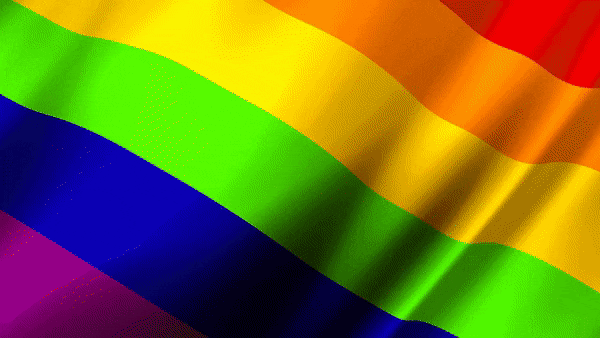
Detective Constable Tracy O’Hara, Chair of the Merseyside Police LGBT+ Network

Manal al-Sharif driving to New Orleans with a rainbow in the distance. (photo credit: Jim Warnock)
The Freedom Drive - Starring by Manal al-Sharif
On May 19, 2011, Manal posted a YouTube video of herself driving in Saudi Arabia, which at the time was the only country in the world where women were not permitted to drive. As Manal recounts in her memoir Daring to Drive: A Saudi Woman’s Awakening, she and her brother were subsequently pulled over, arrested, and interrogated for 5 hours before being released after promising to never drive again in the Kingdom of Saudi Arabia. However, at 2 am that night, the secret police arrived at her home to arrest her again without a warrant. They took her directly to jail, listing her crime as “driving while female.” She was released nine days later promising to never drive again and to not talk to the press. Manal’s story quickly went viral on social media and made international news headlines. Unexpectedly for Manal, those nine days in jail turned her into a symbol highlighting women’s struggle for freedom in Saudi Arabia and when she was released, she spoke out saying “I use my face, my voice, and my real name, because I believe that a society will not be free if the women of that society are not free.”
She is not just fighting for a woman’s right to drive in Saudi Arabia, but to end the overarching male guardianship system in Saudi Arabia. The male guardianship system operates by assigning every woman to a male relative. Throughout her life, she is passed from the control of one male to another. The man is often her father, brother, husband, or son.

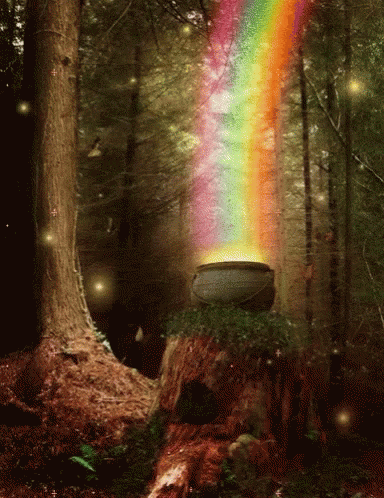

The newly named rose-veiled fairy wrasse.

Hailing from the warm, coastal waters of the Indian and Pacific Oceans, including around Australia, Indonesia, and New Caledonia, the fairy wrasses are known for their intensely beautiful (some say gaudy) colouring.
MEMBERS OF THE Cirrhilabrus genus of the wrasse family (Labridae) – one of the most species-rich families of fish in Australia – fairy wrasses boast an extraordinary array of patterns and pigments, some wearing almost every colour of the rainbow on their diminutive bodies. There are more than 50 species of fairy wrasse on record, most of which are relatively new to science. Before 1970, only a small handful had been discovered, but as diving technologies have advanced in recent decades, so too have opportunities for researchers to explore the deep and remote reef systems that the most elusive fairy wrasses call home.


Rainbow Gatherings are temporary, loosely knit communities of people, who congregate in remote forests around the world for one or more weeks at a time with the stated intention of living a shared ideology of peace, harmony, freedom, and respect. In the original invitation, spread throughout the United States in 1971, the "Rainbow Family Tribe" referred to themselves as "brothers & sisters, children of God", "Families of life on Earth", "Friends of Nature & of all People" and "Children of Humankind". All races, nations, politicians, etc. were invited in the desire that there could be peace among all people. The goal was to create what they believed was a more satisfying culture — free from consumerism, capitalism, and mass media — one that would be non-hierarchical, that would further world peace, and serve as a model for reforms to mainstream society.

Brothers dance and celebrate moments after the prayer circle ends.
PHOTOGRAPH BY ROSS MCDERMOTT, AMERICAN FESTIVALS PROJECT
Inside America's Wildest Hippie Commune (The Rainbow Family)

Influenced by 1960s counterculture and the non-commercial rock festivals of the early 1970s, Rainbow is a "revitalization movement" with many philosophies and practices that have roots in the historic utopian traditions of the mid–19th century. The first Rainbow Gathering was held in Colorado, U.S. in 1972 and was attended by more than 20,000 people. In the 1980s, gatherings started to form outside of North America as autonomous, but connected events around the world.

Pacha mama ☼ rainbow song ⋙⋘ lea johanna and rainbow family
FILE -Rainbow Family members arrive in the Routt National Forest north of Steamboat Springs, Colo., Saturday, July 1, 2006, where as many as 20,000 took part in the annual Rainbow Family gathering. Officials predict that up to 30,000 people will show up for this year's gathering, which is slated to take place in Colorado and will mark the 50th anniversary of the group. (AP Photo/Ed Andrieski, File)
Rainbow Gathering 2022

Oregon Rainbow Gathering: 2017
Let the way of the heart / Milo sun and Rainbow Family Turkey
RAINBOW GATHERING

Cuatro Vientos - Rising Seeds (Danit Handpan Cover)






November 2 to December 8, 2019 in Shreveport, Louisiana
Rainbow City Shreveport was presented by the Shreveport Regional Arts Council (SRAC) and made possible with a grant from the National Endowment for the Arts. It was on view from November 2 to December 8, 2019. RAINBOW CITY Shreveport was a place to make new friends and entertain families during a six-week, fun-filled festival, as the people of Shreveport celebrated the grand opening of the City’s first urban greenspace—CADDO COMMON. CADDO COMMON is in downtown in the Shreveport Common Neighborhood. This exhibition was FREE and open to the public.

Academy Award-Winning Animation Artist William (Bill) Joyce says, ““RAINBOW CITY is not just balloons and bouncy houses. It’s a place about possibility, about heart, about innocence, and hope. RAINBOW CITY is about the power of art to open up and change everyone’s way of thinking about Art as a vital part of our community and culture. RAINBOW CITY is especially a place about the power to transform children into artistically attuned adults.”


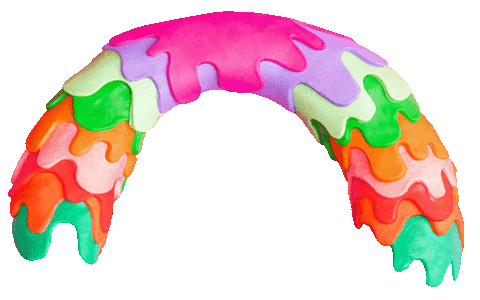




The impressive arch, measuring four metres high and seven metres wide, is made out of more than 2,500 recycled drink cans. It was installed by not-for-profit Every Can Counts in collaboration with Newcastle City Council to bring awareness to the importance of can recycling around Earth Day (April 22). Christine Herriot, Newcastle City Council’s director of operations and regulatory services, said: “It’s fantastic to have this eye-catching rainbow art installation in the heart of our city this weekend, which will certainly get people talking and help spread the message about the importance of recycling.

"All of the cans collected in Newcastle UK over the weekend could be recycled and refilled on shop shelves in just 60 days – and because every can is infinitely recyclable, the benefits of keeping that valuable aluminium in circulation keep adding up again and again. “Recycling rates were at an all-time high during the national lockdowns and, now that restrictions have been lifted, it’s essential that we keep up the momentum.

“We know residents take great pride in having a clean and tidy city, which was demonstrated by the incredible turn out for the Great British Spring Clean. “We thank all of the volunteers, businesses and community groups who played their part in helping us to tidy up their communities and it shows what we can achieve for our environment when we work together. “We hope everyone enjoys having their pictures taken with this brilliant piece of artwork this weekend and remembers the important message behind it.”
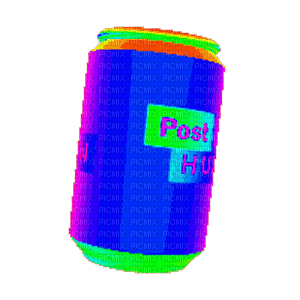
Stargazers have been left baffled after spotting a bizarre phenomenon that look likes oil on water - but it's in the sky. People across Scotland took to social media on Sunday January 29th 2023 to share their snaps of the strange rainbow-coloured clouds, with some even branding it an 'alien' sighting. Many pictures were uploaded of the clouds as they passed over Scotland and the Highlands last night, including Moray, Montrose, Aviemore, Aberlour, Turriff and Carrbridge. Many people seemed at a loss about what they had witnessed, but it has been confirmed the sighting was actually a Nacreous cloud, formed when low-lying clouds cause ice particles to freeze and refract light.


A giant rainbow at the entrance to University Hospital Wishaw provides a fitting tribute to its staff and will remain there as a symbol of hope. Throughout the Covid-19 pandemic, windows across Lanarkshire and the rest of the country filled with rainbows as a way of thanking health workers for their superhuman efforts. The one at Wishaw’s hospital provides a colourful symbol of gratitude to those who worked tirelessly during the pandemic, which brought an uncertainty and fear that few had previously experienced. The rainbow at the entrance of the hospital also acts as a symbol of recognition of the dedicated workers who put those in their care first above their own fears and concerns. Many families lost loved ones, but the care and compassion shown by hospital staff provided reassurance that they were cared for and looked after. Staff became almost invisible as the colours of the rainbow in their uniforms disappeared, wearing white attire including white gowns that emphasised the bleak severity of the pandemic. The rainbow brought back the colourful array of identity in the uniforms again now worn by staff. Its colours representing life, healing, sun, nature, art, harmony and spirit.

A rainbow appears over the M23 Motorway..
The M23 was closed following a major crash involving eight vehicles. An HGV was involved and its diesel tank ruptured, with fuel covering the road, following the crash at about 10.50am on Thursday (February 15) 2018. The northbound carriageway was closed from Junction 10 (Crawley) towards Junction 8 (M25) while emergency services dealt with the incident which occurred between Junction 9 (Gatwick Airport) and 8 (M25).

Road workers clean up the diesel-covered carriageway after the crash on the M23, as vehicles begin to exit via one open lane (Image: Luke Jarmyn)
All lanes of the M23 northbound carriageway are open and Highways England has tweeted to tell drivers there are “no delays” after the “clean-up was completed quicker than first anticipated”. Part of the road had to be resurfaced due to a diesel spillage from an HGV. Pictures from the scene show a crumpled car as well as several other damaged vehicles and emergency services. Motorists spent up to six hours stuck in traffic on the northbound carriageway following the eight-vehicle crash between Junction 9 ( Gatwick ) and Junction 8 ( M25 ) at about 10.45am on Thursday (February 15) 2018. The collision left one man with serious injuries and another needing hospital treatment. Lane 3 was the first to reopen at about 3.30pm and beforehand police had been escorting small groups of vehicles from the rear of the queue off the motorway via a ramp in Smallfield. The motorway remained closed for hours from Junction 10 ( Crawley ) while the road was resurfaced due to a diesel spillage an HGV.

Fleetwood Mac - Seven Wonders (Official Music Video)

The Great Pyramid of Giza is the largest Egyptian pyramid and the tomb of Fourth Dynasty pharaoh Khufu. Built in the early 26th century BC during a period of around 27 years, the pyramid is the oldest of the Seven Wonders of the Ancient World, and the only one to remain largely intact. It is the most famous monument of the Giza pyramid complex, in the Pyramid Fields of the Memphis and its Necropolis UNESCO World Heritage Site, in Giza, Egypt. It is at the most Northern end of the line of the 3 Pyramids of Giza.

Initially standing at 146.6 metres (481 feet), the Great Pyramid was the tallest man-made structure in the world for more than 3,800 years. Over time, most of the smooth white limestone casing was removed, which lowered the pyramid's height to the present 138.5 metres (454.4 ft). What is seen today is the underlying core structure. The base was measured to be about 230.3 metres (755.6 ft) square, giving a volume of roughly 2.6 million cubic metres (92 million cubic feet), which includes an internal hillock.
The dimensions of the pyramid were 280 royal cubits (146.7 m; 481.4 ft) high, a base length of 440 cubits (230.6 m; 756.4 ft), with a seked of 5 1/2 palms (a slope of 51°50'40"). The Great Pyramid was built by quarrying an estimated 2.3 million large blocks weighing 6 million tonnes in total. The majority of stones are not uniform in size or shape and are only roughly dressed. The outside layers were bound together by mortar. Primarily local limestone from the Giza Plateau was used. Other blocks were imported by boat on the Nile: White limestone from Tura for the casing, and granite blocks from Aswan, weighing up to 80 tonnes, for the King's Chamber structure.

There are three known chambers inside the Great Pyramid. The lowest was cut into the bedrock, upon which the pyramid was built, but remained unfinished. The so-called Queen's Chamber and King's Chamber, that contains a granite sarcophagus, are above ground, within the pyramid structure. Khufu's vizier, Hemiunu (also called Hemon), is believed by some to be the architect of the Great Pyramid. Many varying scientific and alternative hypotheses attempt to explain the exact construction techniques. The funerary complex around the pyramid consisted of two mortuary temples connected by a causeway (one close to the pyramid and one near the Nile), tombs for the immediate family and court of Khufu, including three smaller pyramids for Khufu's wives, an even smaller "satellite pyramid" and five buried solar barges (boats).
Full tour inside the Great Pyramid of Giza | Pyramid of Cheops aka Khufu | Trip to Kairo, Egypt 2021
Building The Great Pyramid of Giza | Lost Treasures Of Egypt | National Geographic UK
New discovery inside Great Pyramid of Giza reveals hidden secrets

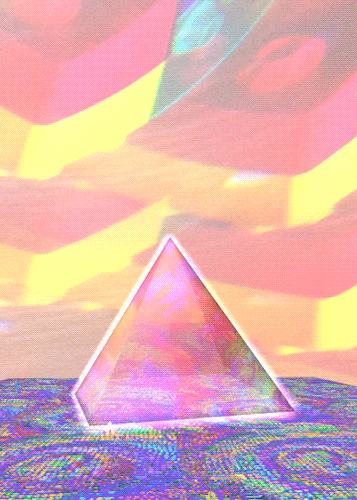

-
This simple looking rainbow puzzle is actually a real mind-bender.
-
Align the coloured buttons vertically according to their colour groups all the way around
-
The layers spin and the buttons slide up and down making them for a really tricky challenge
-
Prepare to be baffled

Seb - Rainbow Islands (Radio Mix)
I wanna fly, making rainbows in the sky,
Find a star where love never dies, and live forever in the skies.
Come and let me try, to make the colours in the sky
Keep my dream that love never dies,
And hold you ever in my arms and cry,
Rainbow Islands.
Seb - Rainbow Islands (Radio Mix)

Rainbow Islands - Main Theme

Rainbow Islands - Main Theme
![Rainbow Islands Longplay (Arcade) [All Secret Rooms]](https://i.ytimg.com/vi/e6-cMzgkjqo/maxresdefault.jpg)
Rainbow Islands Longplay (Arcade) [All Secret Rooms]
Rainbow Islands Longplay (Arcade) [All Secret Rooms]


Double rainbow at Misool island, West Papua, New Guinea, Indonesia

Rainbow is a British children's television series, created by Pamela Lonsdale, which ran from 16 October 1972 until 6 March 1992 when Thames Television lost its ITV franchise to Carlton Television. The series was revived by HTV on 10 January 1994 until 24 March 1997, in two different formats from the original Thames series, with differing cast members.

The series was originally conceived as a British equivalent of long-running American educational puppet series Sesame Street. The British series was developed in house by Thames Television, and had no input from the Children's Television Workshop. It was intended to develop language and social skills for pre-school children and went on to win the Society of Film and Television Arts Award for Best Children's Programme in 1975. It aired five times weekly, twice weekly on Mondays and Wednesdays then Tuesdays and Fridays, and finally once weekly at 12:10 on Fridays on the ITV network.

Rainbow | Singalong Songs | Flashback TV Kids
The show had three producers over its lifetime – Pamela Lonsdale, Charles Warren and Joe Boyer. The original Thames series has gained cult status and continues to get frequent mentions on radio and television. A few DVDs have been produced, including one celebrating 30 Years of Rainbow.
Rainbow | Singalong Songs | Flashback TV Kids

Rainbow - What's Wrong With Bungle?
Rainbow - What's Wrong With Bungle?

Rainbow - Who Heard It?
Each episode of Rainbow revolved around a particular activity or situation that arose in the Rainbow House, where the main characters lived. Some episodes, particularly in the early years, were purely educational in format and consisted of a series of scenes involving the characters learning about that particular episode's subject, interspersed with real-world footage, songs, stories and animations related to that same subject. The puppet characters of Zippy, George and Bungle would take the role of inquisitive children asking about the episode's subject, with the presenter (initially David Cook, and from 1974 onwards Geoffrey Hayes) serving the role of teacher figure, educating them about the subject. From the 1980s onwards, most episodes were more story-driven and frequently involved some kind of squabble or dispute between the puppet characters of Zippy, George and Bungle, and Geoffrey's attempts to calm them down and keep the peace.
Rainbow - Who Heard It?
The main story was interspersed with songs (most notably from Rod, Jane and Freddy, although the singers on the show changed several times during its run), animations, and stories read from the Rainbow storybook, usually by Geoffrey (or David, depending on the episode's air date). Some episodes focused on a particular topic, such as sounds or opposites, and consisted mainly of short sketches or exchanges between the main characters, rather than a consistent storyline. Brief sequences of animated line drawings, made by Cosgrove Hall Productions, were included in many episodes.